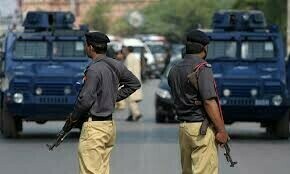The conversation around financial inclusion is still new in Pakistan’s mainstream. But within the self-indulgent policy circle, it’s quite a hot topic — one that gets you conference speaker slots and juicy grants from foreign donors.
Unfortunately, it continues to be discussed in very broad terms, at least for the most part, where the lens is typically limited to the national aggregates.
For a country as large and diverse as Pakistan, such an approach leaves us oblivious to the regional disparities. Understanding those differences is critical to meaningfully changing the status quo and improving access to financial services. Luckily, there is enough data for us to at least initiate the conversation.
Let’s start with the Karandaaz Financial Inclusion Survey of 2022, which gives a glimpse of what the differences look like. According to the results, 30 per cent of Pakistani adults — 47pc males and 13pc females — reported having a registered account with a formal institution.
However, this wasn’t evenly spread out as only 14pc of the respondents from Balochistan had a registered financial institution account as compared to 45pc from Islamabad.
The corresponding figures for Punjab, Sindh, Khyber Pakhtunkhwa, Azad Jammu & Kashmir, and Gilgit-Baltistan were 32pc, 29pc, 26pc, 34pc, and 35pc, respectively. This means that Sindh and Balochistan lag behind the national average.
Inequity in financial inclusion across provinces represents a bleak outlook as policymakers ought to realise access does not equate to usage
Using the survey data, Karandaaz built a composite index comprising six sub-indices: financial accounts registration, access points, underserved markets, capabilities, diversified usage, and trust levels.
Here again, Islamabad comes out on top with a score of 0.93 out of 1, well above the national average of 0.77, while Balochistan is miles behind at 0.54. Unsurprisingly, this is quite a recurring feature where the province consistently underperforms across every dimension.
Karandaaz’s index uses the results from their survey. To get a better sense of the picture, it would also be worth looking at the supply-side statistics, which, albeit not comprehensive enough, provide valuable insights.
As of March 31, Pakistan had 18,087 bank branches, of which 1,409 were microfinance. Expectedly, Punjab leads here by a mile at 9,714 while Sindh is a distant second at 4,171, where Karachi alone accounts for almost 61pc of the total.
However, relying on absolute values is probably not the best idea, and it’s important to contextualise the numbers with respect to populations. In line with expectations, Islamabad Capital Territory stands out here with almost 45 branches per 100,000 adults. The corresponding figure for Sindh is 12.9, Punjab 12.3, Balochistan 9.3, and Khyber Pakhtunkhwa 9.
This access to bank branches, microfinance or otherwise, explains the trends in [personal] deposit mobilisation where Islamabad accounts for 6.4pc of the total despite its smaller population. On the other hand, Balochistan contributes only 2.1pc to the aggregate, which is slightly lower than its estimated share of 3pc in the national GDP.
Historically, most of the gains made by Pakistan in improving financial inclusion haven’t come from banks but rather branchless banking, first through agent networks and eventually mobile wallets. This provides us with an even better lens to gauge where things stand as data exists on not only the infrastructure but also accounts access and usage.
By sheer scale, it’s a no-brainer that Punjab leads with 413,991 branchless agents as of December 2023. However, a deeper look shows that the province’s share in the national total has actually increased to 63.72pc, from 62.99pc in 2019. This is not only higher than its proportion of the population but also that of bank branches — and continues to increase steadily.
On the flip side, Sindh and Balochistan’s contribution is fledgling. In relative terms, this means Punjab has 516 registered mobile money agents per 100,000 adults, 2.74 times what Balochistan claims.
However, of late, Balochistan appears to have picked up some momentum as the number of registered accounts reached almost three million by 2023. This puts the province’s share at 2.6pc, up from 1.95pc compared to the end of 2019 — boasting the second-highest five-year compound annual growth rate of 27.1pc and trailing only behind Gilgit Baltistan’s 27.5pc.
Unfortunately, access doesn’t equate to usage, as policymakers and financial institutions have come to learn the hard way. On that front, Punjab leads once again with 2.61 billion transactions out of a total of 3.94bn in 2023 — making up 66.31pc of the national aggregate. In other words, it accounts for a bigger piece of the pie, even relative to agent networks or account ownership.
Not only that, Punjab also happens to be the fastest growing market, increasing at a five-year compound annual growth rate of 27.2pc. This is 455 basis points higher than the second-place contender, Gilgit-Baltistan, where the low base also played a major role. By throughput, Pakistan’s largest province had a 60.8pc share or Rs11.06 trillion. Sindh was far behind at Rs3.47tr, followed by Khyber Pakhtunkhwa at Rs2.7tr.
The numbers paint a clear picture of the stark regional disparities across Pakistan. Hardly anything here is surprising: Balochistan, for far too long, has been ignored by everyone while Punjab relatively stands out, not just in financial inclusion.
Needless to say, this needs to change, and for that, the first step is reporting the relevant data. Currently, we don’t even have an official breakdown of provincial GDP, let alone visibility at the city level. How would we then know where things are improving and what areas are being left behind?
The writer is the Co-founder of Data Darbar
Published in Dawn, The Business and Finance Weekly, August 26th, 2024















































